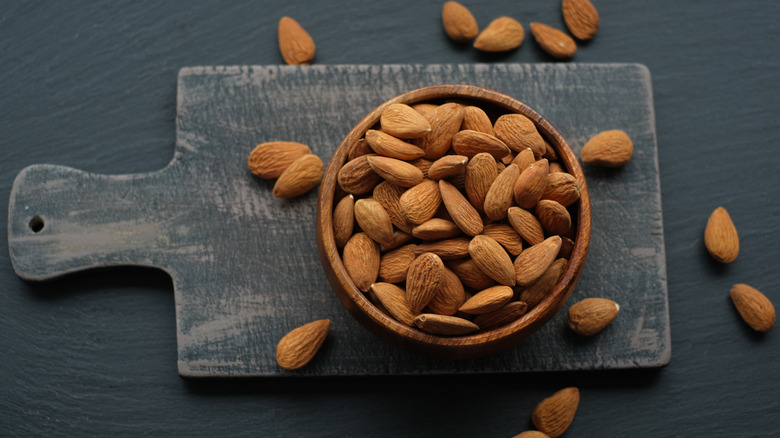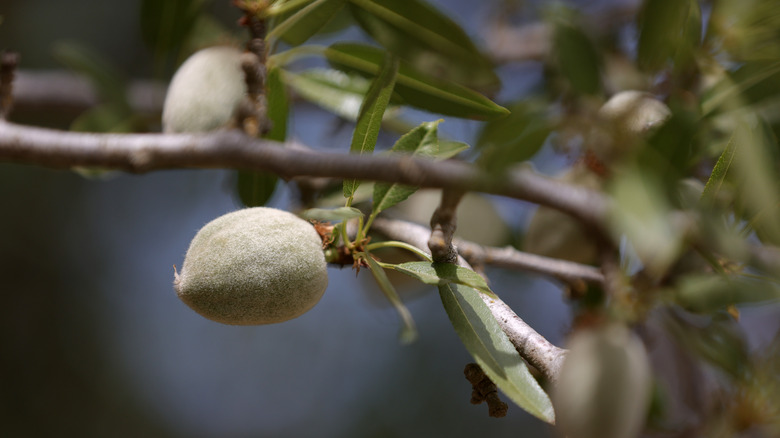Almonds Aren't Actually Nuts. Here's Why
Unless you have followed a very specific diet that prevents snacking on certain "nuts," you might not have known that many "nuts" are not nuts at all. Almonds are just one such food that is often misunderstood and not properly categorized. According to Eat This, Not That, almonds are considered to be seeds rather than nuts.
It's all because of the anatomy of seeds and nuts just as tomatoes are considered to be fruits because they contain seeds and come from a flower. True nuts are the fruit of a tree itself that dries, hardens, and conceals an individual seed according to McGill University. Nuts that fit this description include hazelnuts and chestnuts. Even acorns are technically true nuts.
McGill also explains that almonds, as a drupe, grow inside of a hull within a fleshy fruit and must be shelled to be enjoyed, which is why they are seeds instead of nuts. Peaches and mangoes also fall into this category, but people tend to eat those for the flesh rather than the seed inside.
Almonds are in good company, too
Almonds are far from the only "nut" that isn't actually a nut, though. You might have heard that peanuts are actually legumes in the past, which is true. That's because they grow underground inside of pods, per Insider. While there are few legumes people often think of as nuts, there are tons of other seeds that are generally referred to as nuts.
Apart from almonds, pistachios, cashews, and walnuts are all seeds, too. Pistachios grow on trees that produce bunches of the little seeds. Cashews are actually seeds attached to the bottom of what are known as cashew apples that also grow on trees. And like the others, walnuts are also grown on trees and hide inside their fleshy exteriors until it is time to harvest them.
The next time you pick up a container of mixed nuts, just know that you're really chowing down on a mixture of seeds and legumes most of the time. It's a startling realization to make, but it's well worth understanding and knowing the difference.

